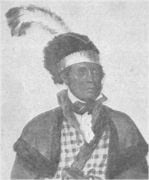Where was Hernando de Soto’s Guaxale?
Guaxale was a Native American village visited by the Hernando de Soto Expedition in late spring of 1541. De Soto and his small army of conquistadors explored what was to become the Southeastern United States between the years 1539 and 1543. Despite the fact that de Soto’s men only visited Guaxale briefly, and the village was not large, it’s location has been a major focus for scholars, studying the earliest Spanish explorers. In North Carolina one suggested location of Guaxale has even been a key element of tourism promotion.




